MSRP (*Base Edition)
Battery EV | Sedan | 705KM

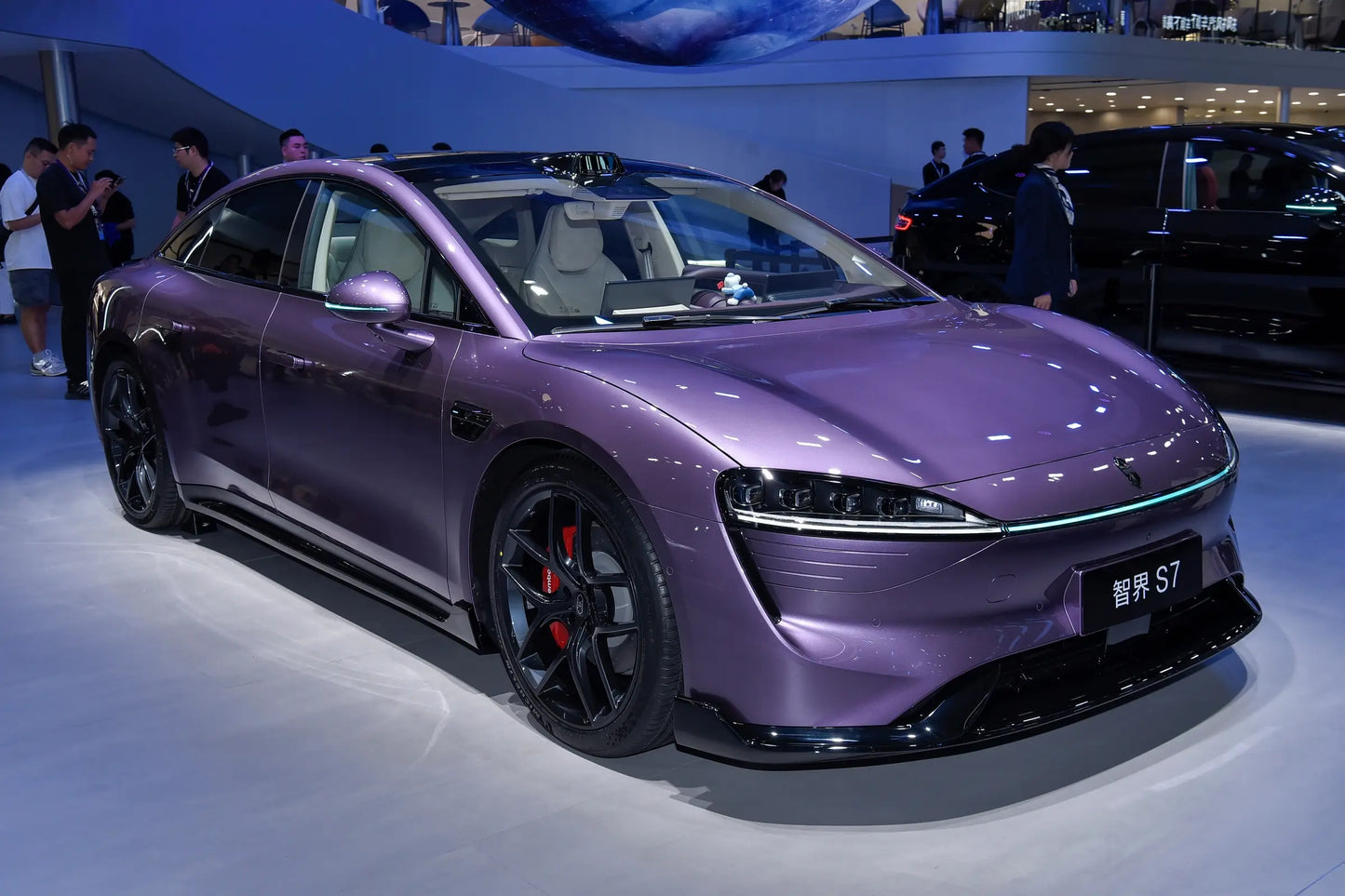
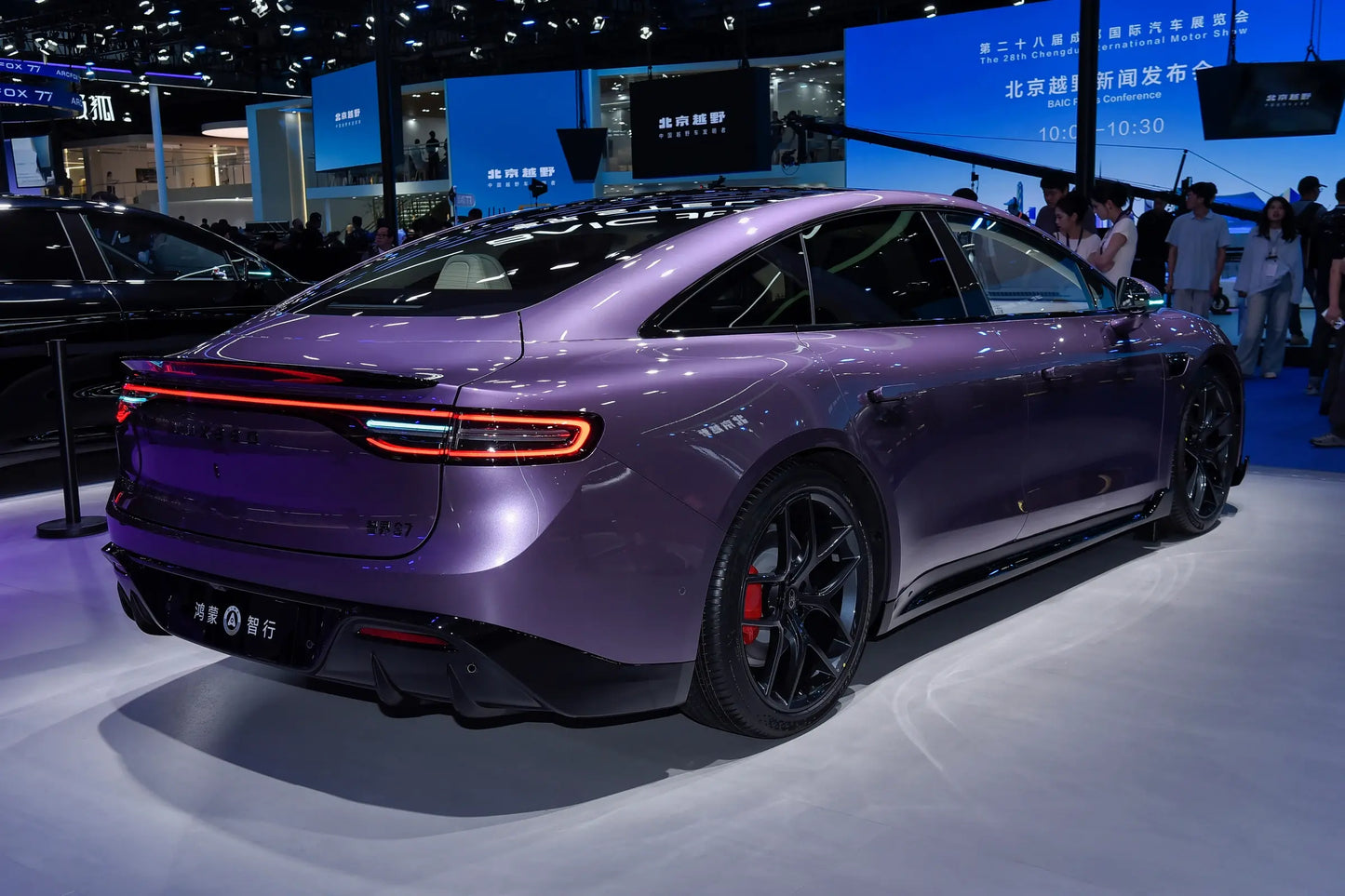
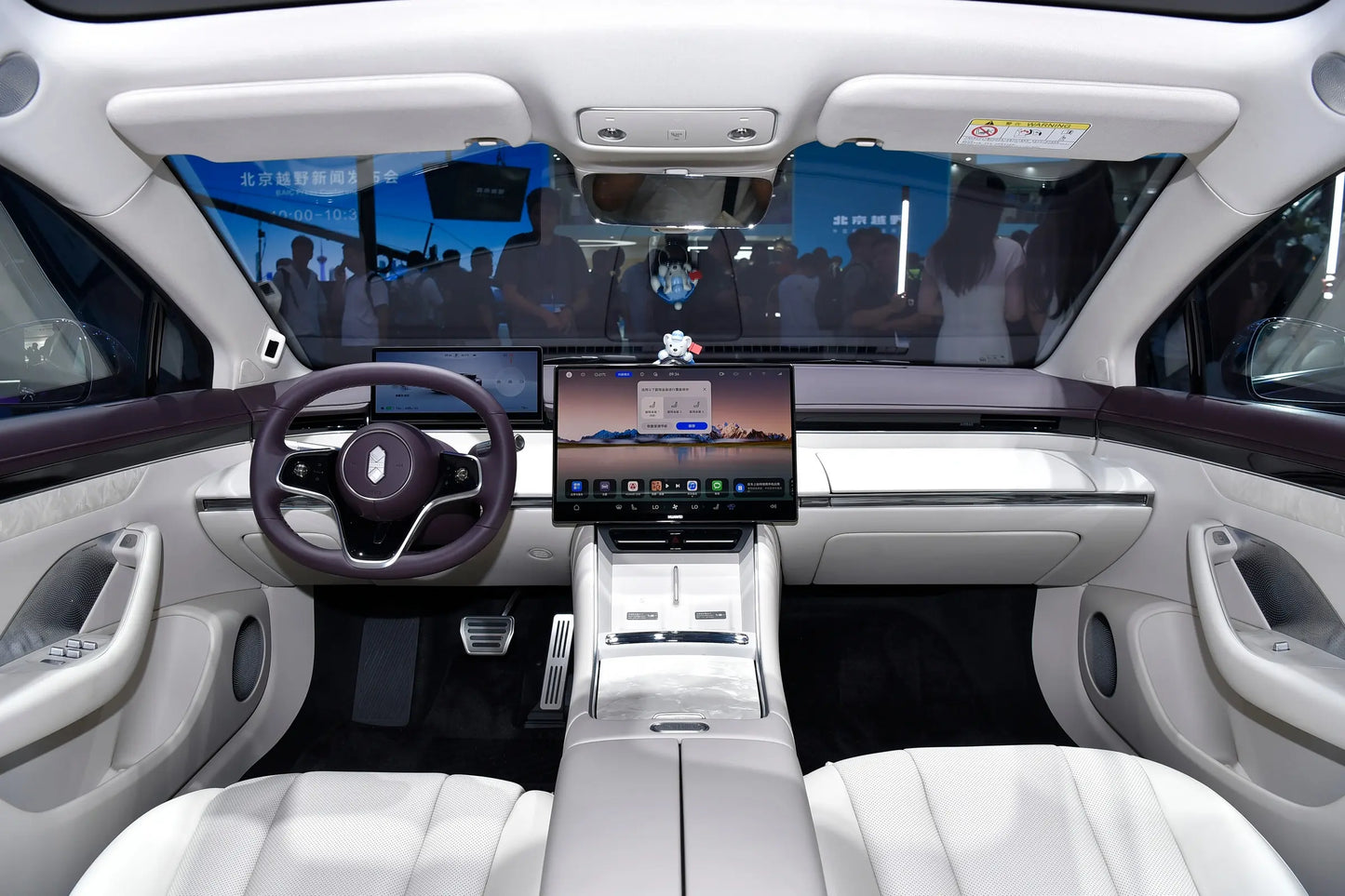
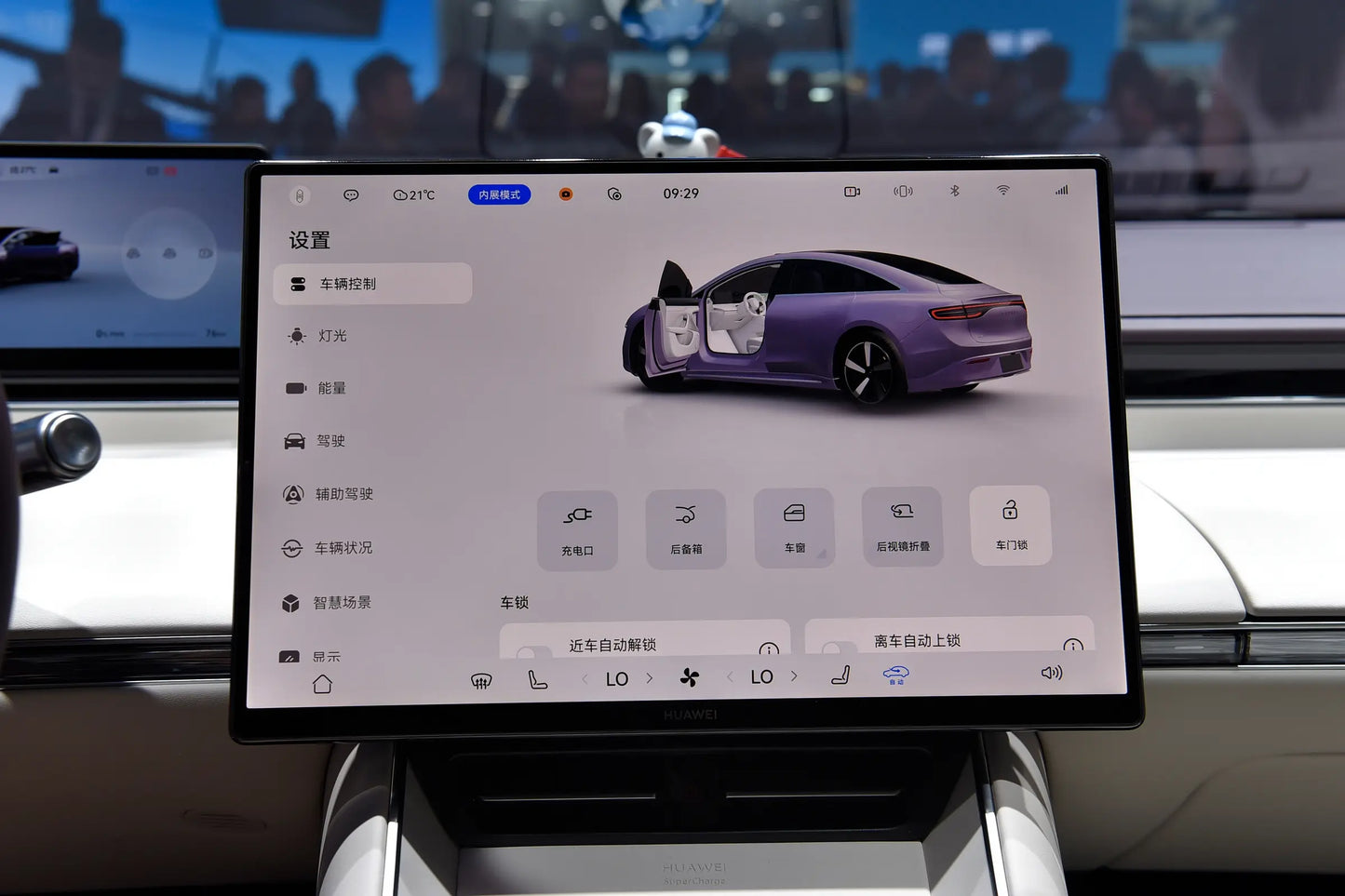
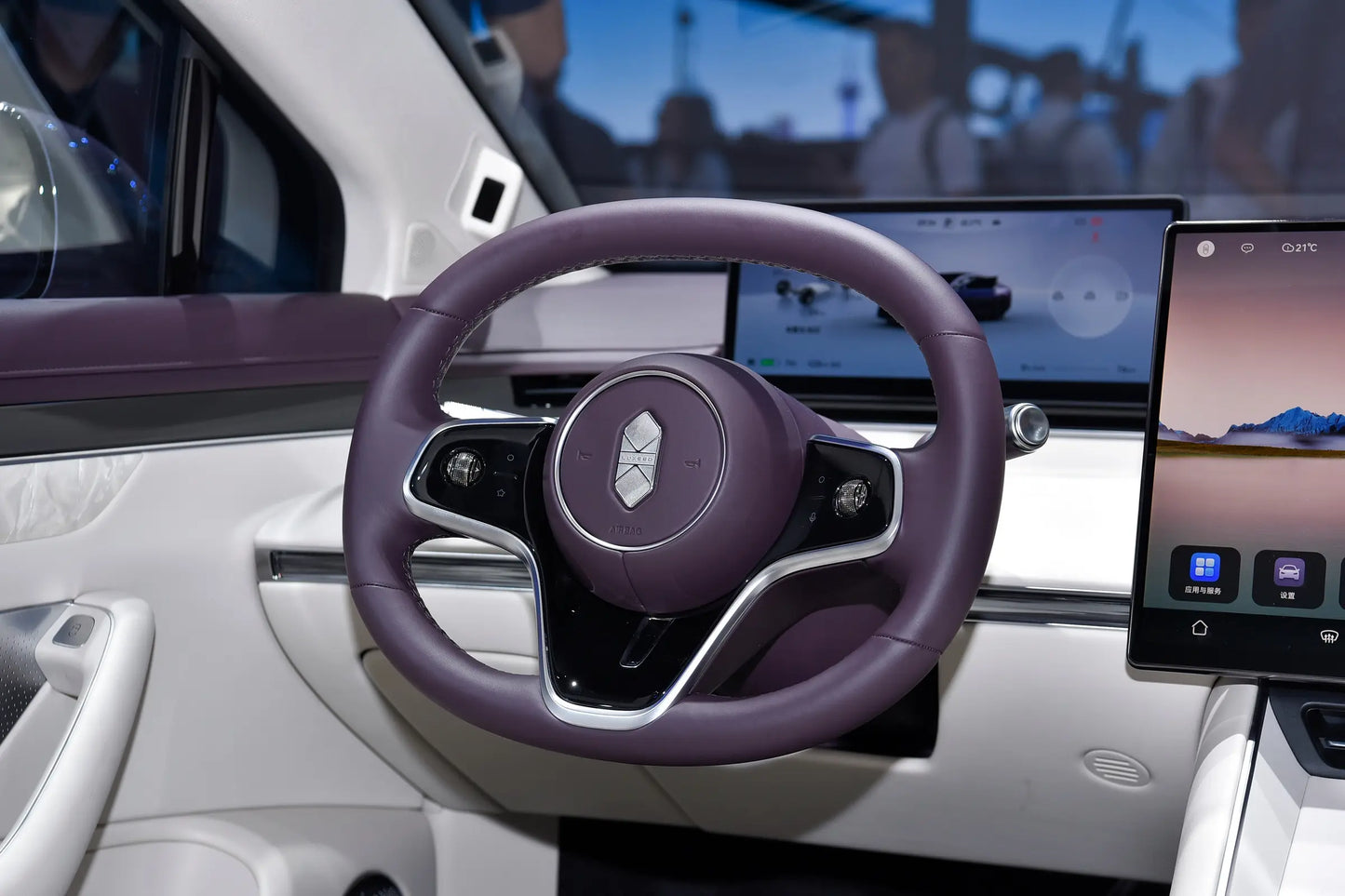
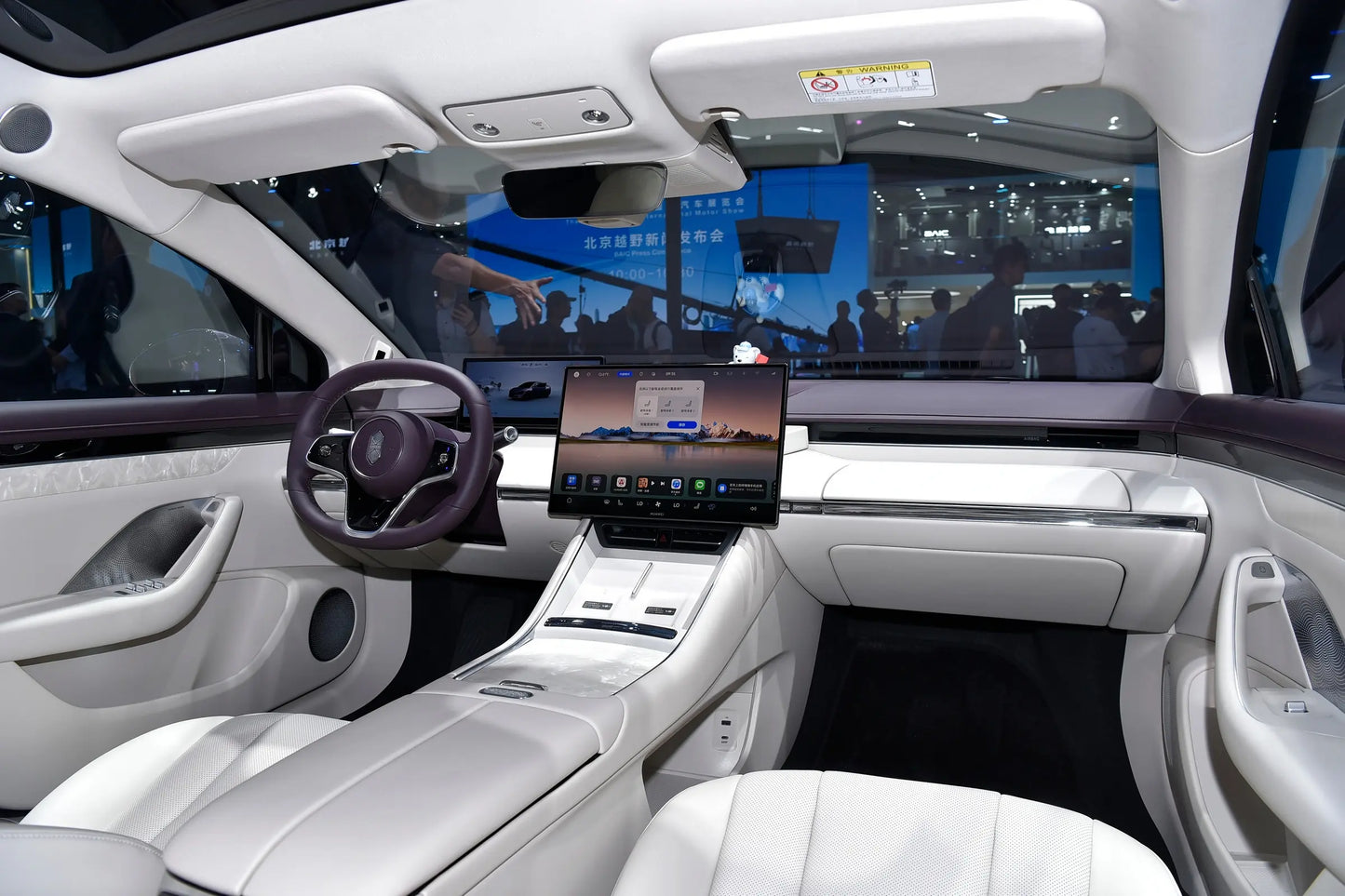
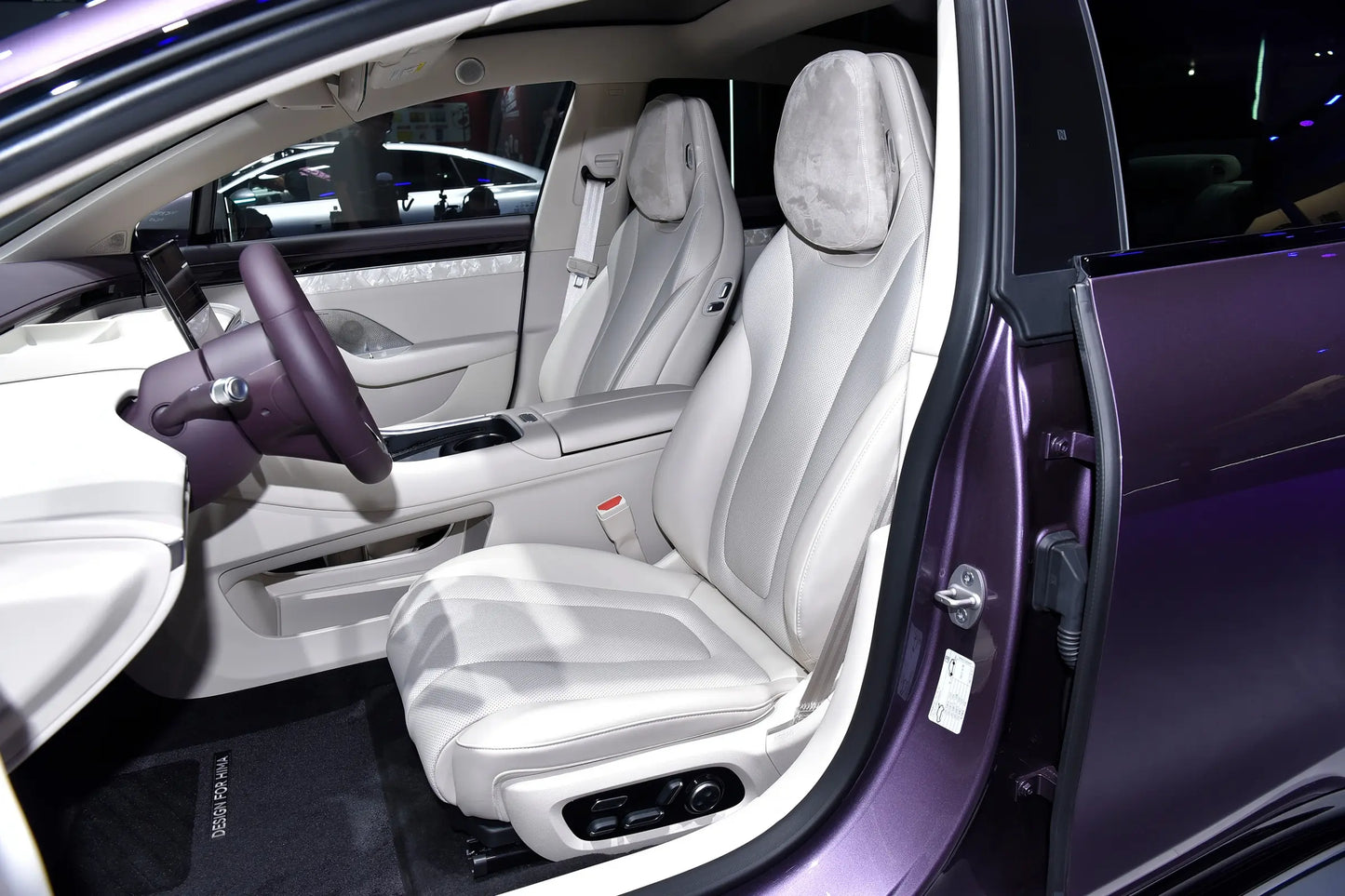
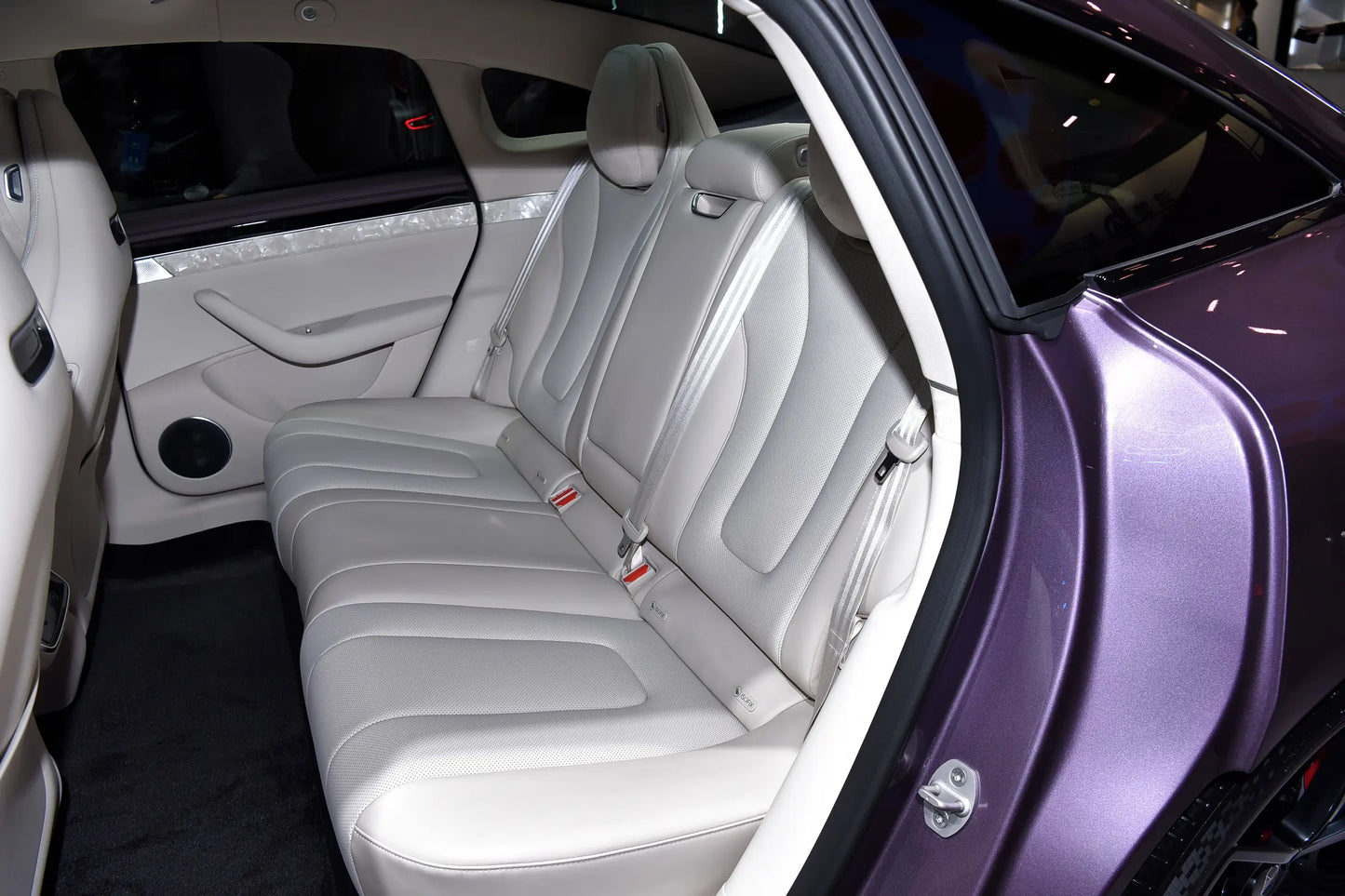
$33,985.00 USD
-
BrandChery
-
Vechile ClassSedan
-
Energy TypeBattery EV
-
Pure Electric Range(KM)705
-
Curb Weight (kg)2010
-
Battery Typeternary lithium battery
-
Total Power of Motor (KW)215
-
Maximum Power(KW)215
-
Total Torque of Motor(N・m)396
-
Maximum Torque(N・m)114
-
Length x Width x Height(mm)4971x1963x1474
-
Official 0-100km/h Acceleration Time(s)6.5
-
Power Consumption(kWh/100km)18.6
-
Equivalent Fuel Consumption (Electricity)(L/100km)2025
-
Battery Capacity82 (kWh)
-
MaximumSpeed(km/h)155
-
Motor Layoutrear mounted motor
-
Transmissionsingle-speed transmission
-
IDev2509073
Panoramic Interiors
Video Manual
Authentic on-site shots for an immersive vehicle detail experience
Real Customer Reviews
Source: DCAR
Review A
First, the version is the MAX RS. It has a Frost Moon Silver exterior, a Moon Shadow Gray interior, 21 - inch forged wheels, zero - gravity seats, a technology comfort package, and a sports kit. I can't write down the details about placing the order and picking up the car here, so check the pictures.
My experience on a 1500 - km highway trip and using intelligent driving pilot: I set off from Ningbo to Xi'an, a total of 1500 km. My colleague and I took turns driving. We charged the car 7 times (we went to the service area when the remaining range was 100 km, selected the comprehensive remaining range, and used intelligent driving all the way at the speed limit). Each charge took about 30 minutes, and we got 50 kWh of electricity for about 70 yuan. The map showed a 15 - hour journey (excluding charging time), but the actual whole - journey took 20 hours. The highway toll was 1000 yuan, and the electricity cost was 500 yuan. The experience was far ahead. My colleague has always driven fuel - powered cars. This time, he felt the arrival of the tech era. Xiaoyi (the intelligent driving system) was so stable. With Xiaoyi driving all the way, we sang songs and chatted. However, the journey was really long, and we were extremely exhausted on the way back. But it was definitely reliable in terms of speed and safety. Xiaoyi drove at least 1300 km out of the 1500 - km journey. Yu Chengdong's claim that one can return home over 1000 km with intelligent driving is absolutely true. You just need to hold the steering wheel from time to time and open your eyes to look ahead.
Regarding the highway charging issue, at first, I calculated the remaining battery and the distance to the next service area. Later, I found that all charging stations were usable and the charging speed was fast, so I just went to the service area to charge when the battery was low. However, it's worth noting that Xiaoyi likes to stay in the left - most lane on the highway. So, if you're going to a service area, cancel the intelligent driving in advance and drive by yourself, or stay in the right - most lane to prevent Xiaoyi from changing lanes. Once, while I was boasting about how great Xiaoyi was, it missed the ramp (we were on a straight - ahead lane close to a right - turn lane, and the right side was blocked by a bunch of large trucks, and there was no time for it to react). When it missed the straight - ahead exit, it was still looking for a way to change lanes to the right. The key is that even if you turn on the right - turn signal to change lanes, Xiaoyi's logic will still make it change lanes to the left. This part can be optimized, and owners should also pay attention on the highway. Another thing on the highway is that before entering a tunnel, Xiaoyi will move to the middle lane before the lane lines become solid. Sometimes, there are large trucks in front and behind, and Xiaoyi still wants to squeeze in, which feels very unsafe. Or when there's an obviously slow - moving large truck in front, it will also move to the middle. So, Xiaoyi's logical judgment still tends to a safety strategy. The owner should intervene in Xiaoyi's judgment in advance when entering a tunnel. Secondly, although Xiaoyi can detect a slow - moving vehicle ahead and change lanes to overtake (it won't flash the high - beam twice or honk the horn to remind), there are usually two large trucks in the middle at this time. Instead, the vehicle behind may take our original position, and we'll be stuck behind the slow - moving large truck and unable to overtake. Then, after a while, it will move to the left lane again. The last point is that although Huawei's intelligent driving is far ahead and is very good at predicting whether to overtake and maintaining the appropriate distance and speed from the vehicle ahead, it will block the vehicles behind that want to overtake and won't give way actively, which will still affect the judgment of other drivers on the road. So, it's still necessary to keep a certain level of concentration while holding the steering wheel. By the way, I'm looking forward to map - free urban intelligent driving.
Driving experience
I can't describe the details. I can only say that when driving on the highway, the car hugs the ground tightly. It's very responsive when turning or avoiding obstacles, giving you full confidence. During the test on a closed route, the speed could reach 200 mph. The maximum speed for highway intelligent driving can be set to 130 mph, and it has lane - departure correction.
When avoiding an oncoming vehicle in the city, the car got too close to the right side (maybe due to lane departure). I clearly felt the steering wheel being turned, and we passed by without any sense of danger. Later, when I checked the dash - cam, I couldn't tell what had happened. It really gave me a scare. Usually, it just beeps when the car crosses the lane line.
V4.0.1.7 update
Personally, I think the Sport + mode has been added, along with some UI changes. In the Sport + mode, the accelerator feels more responsive.
One thing I want to say about the key: First of all, I have an iPhone. If I use the key card, I have to put it on the left mat when getting in the car. But if I use my phone, I just need to put the phone on the mat. This logic remains the same whether there's an update or not. The two can't be interchanged. Otherwise, if you unlock the door with the card and don't put the card on the charging pad, there won't be a READY prompt.
Accessories
1. The trunk mat is a bit useful. The things we put in the back usually get a bit dirty.
2. The cup holder mat seems useful. Last time, the stopper on the cup holder mat punctured my milk tea cup.
3. The floor mats that come with the car are actually enough. Just go for a car wash from time to time to keep the interior looking clean, or you can buy a car vacuum cleaner to clean it yourself.
4. The mat on the charging pad doesn't seem useful for now.
5. The door kick - guard might be useful. I'm not sure if my feet will scratch the plastic there.
6. The rear - seat kick - guard is also a bit useful.
7. The trunk top mat is not very useful.
In general, most of the accessories are not very useful. Just take them to the car wash to clean them from time to time. It'll take some time to see how well they resist dust.
Summary
The driving experience of the car is excellent. The acceleration and good - looking appearance of the RS version can outshine other models on the street. The intelligent features can greatly improve the driver's experience, including but not limited to assisted parking, intelligent driving pilot, and seat massage and ventilation.
However, if you're concerned about the price and range, you can choose the MAX+ or MAX versions. I don't recommend the PRO version, as I haven't driven it.
Overall, the car is a bit pricey, and there are still some minor problems. But it has a good foundation and even exceeds expectations in some aspects. I still recommend a thorough test drive and look forward to future updates.
Review B
¡¾Exterior¡¿¡¾Space¡¿¡¾Interior¡¿
This car didn't sell very well before. Its exterior doesn't seem as good - looking as the Xiaomi SU7. I own a Xiaomi SU7 Max, and it's really cool. The price of the Zhijie S7 is also slightly higher than that of the Xiaomi. If you only consider the exterior and price, you can't feel its advantages. However, now I like it more and more since I actually bought it. First of all, its exterior is of the type that grows on you. Except that the front of the car looks a bit flat and short when viewed from the front or at a 90 - degree side angle, it looks really cool when viewed from a 45 - degree angle, and it also looks good from the back. Then, due to the one - box design, although the front of the car isn't long and not as cool, the interior space is much larger than that of my Xiaomi SU7. Moreover, the interior workmanship and materials are better. The double - laminated glass provides good sound insulation. Both the front and rear rows have seat ventilation and heating, and the zone - controlled air - conditioning can be independently controlled. The front passenger seat has a zero - gravity seat, and both front seats have seat massages. This is better than my Xiaomi SU7. Especially, the rear row is much larger, and my wife and kids like to sit in this car. The Xiaomi is more suitable for solo driving. It's a bit lacking for family use as the headroom and legroom in the rear row are a bit small. The Xiaomi is suitable for young people without kids or young couples, while the Zhijie S7 is suitable for both young people and family use, covering a wider range of people and having more functions. The battery is also larger, and the 800V fast - charging across the whole series is a bit faster.
¡¾Special Design¡¿
I really like the design of the distant dashboard and the front - passenger armrest box and platform. I don't like using the HUD as I find it glaring, but the distant screen of the Zhijie S7 perfectly replaces the HUD. It looks good and isn't glaring. Then, the whole family likes the front - passenger platform and armrest box. I use it to place my computer for work, my wife uses it as a dressing table, and my daughter uses it as a drawing table. Anyway, it's very practical. When going on a long - distance trip, if the clothes don't dry after being washed, you can even hang them on the front platform to dry. It's really practical.
¡¾Assisted Driving¡¿
Intelligent driving is Huawei's strongest area. I own many cars of various brands. I think the best intelligent driving system currently is Huawei's. Whether on highways or urban roads, it performs well. Automatic parking, remote parking, and parking when away from the car are all useful. The latest upgrade also includes valet parking and VPD parking chauffeur. You don't have to worry about the car at all. The car can find a parking space by itself. If the parking space is occupied, it will continue to find an empty one. It's really cool, giving a feeling of future technology with driverless features.
Huawei's intelligent driving system has the highest safety level. It can avoid road construction, roadblocks, dead dogs or cats in the middle of the road, and irregular obstacles on the highway. It does the best job in avoidance, and my other cars can't be as stable as Huawei's intelligent driving system. Also, when encountering a broken - down car in a tunnel without streetlights, it can still avoid it. I had a scare when it happened, but it really works well. Once, when my wife was driving, a big plastic bag suddenly floated towards the car, and it also avoided it. It's really amazing. So even though the Huawei intelligent driving package costs extra money, I'm willing to buy it because it's safer and more reassuring to use.
¡¾Handling and Chassis¡¿
The handling of the Zhijie S7 is also very good, and the chassis is great too. Lane - changing is very smooth, and the acceleration is very sensitive. Although my car isn't the four - wheel - drive version, the acceleration in sport mode is still very fast. It only takes one foot to go from 90 to 120 km/h. When driving in the city on a normal day, with the music on and no traffic jams at night, overtaking and lane - changing on the expressway are very easy. Since the front of the car is shorter, lane - changing is more effortless, and it gives a bit of the feeling of driving a Tesla Model 3. People who focus on handling and chassis will also like this car. Anyway, I drive this car quite often now. I've had it for about two months and have already driven nearly 5000 kilometers.
I suggest that you don't buy the four - wheel - drive version as it's too expensive. The two - wheel - drive version is enough. In fact, very fast acceleration isn't useful most of the time, and the two - wheel - drive version is sufficient for daily use. Moreover, it has better range, making long - distance trips more relaxed.
¡¾Charging Time¡¿
The whole series supports 800V fast - charging. When charging at highway service areas, it can usually reach a full 120kW. With new charging piles, it can reach 170 - 180kW. If using the 800V ultra - fast - charging piles from Li Auto, NIO, or Huawei, it can reach 260kW, which is very fast. Generally, after charging for 20 minutes, it can have a range of over 300 kilometers on the highway, or 500 kilometers in the city. So when I drove from Hunan to Tianjin, a 1500 - kilometer journey, I didn't feel it was inconvenient at all. I just needed to drive 300 kilometers and then charge for 15 - 20 minutes. It's really fast, and the electricity cost is also cheap. It only costs 300 yuan for a 1500 - kilometer trip in this pure - electric car.
¡¾Range and Energy Consumption¡¿
I picked up the car in winter. In November, when the temperature was around 7 - 8 degrees Celsius, it could run 500 kilometers on the highway and 600 kilometers in the city. Now in January, with the temperature around 0 degrees Celsius in Beijing, it can run about 450 kilometers on the highway and 550 kilometers in the city. The range is about 65% - 70% of the full range. I'll test it again when the temperature rises in March or April. I think it should be able to run 550 - 600 kilometers on the highway and 700 kilometers in the city, considering it has a 100 - kWh large - capacity battery.
¡¾Intelligent Cockpit¡¿
The Huawei ecosystem is very useful. Your mobile phone and smartwatch can be used as car keys. Kids in the back row can watch movies and cartoons on the Huawei tablet. The Super Desktop can also be used for screen - mirroring to watch movies. However, it needs to be used in conjunction with a Huawei mobile phone, and the compatibility with other mobile phones is a bit poor. This time, the compatibility of wireless charging is better. Not only Huawei mobile phones, but also Xiaomi and OPPO phones support wireless fast - charging. This deserves praise.
Review C
The new car has become more intelligent, such as the functions of intelligent driving and parking. In addition to the common right - angled parking spaces, we also tested six types of parking spaces, including parallel parking spaces, vertical parking spaces, grass - embedded brick parking spaces, mechanical parking spaces, and space parking spaces without parking lines. The Zhijie can park in all kinds of parking spaces without any pressure. It can even drive perfectly into a position only 40 cm wider than the car. The same goes for intelligent driving. It can successfully pass through continuous ramps, large - curvature curves, and long tunnels. Surprisingly, it can also complete the entire journey on the elevated roundabout without performance degradation. More importantly, while providing a good continuous experience, the system's operation is very human - like. When going on and off ramps, there won't be large - scale acceleration or deceleration, nor will it zig - zag. Moreover, in order to improve the success rate of lane - changing, in addition to the acceleration strategy, there are also situations of lane - changing while decelerating.











